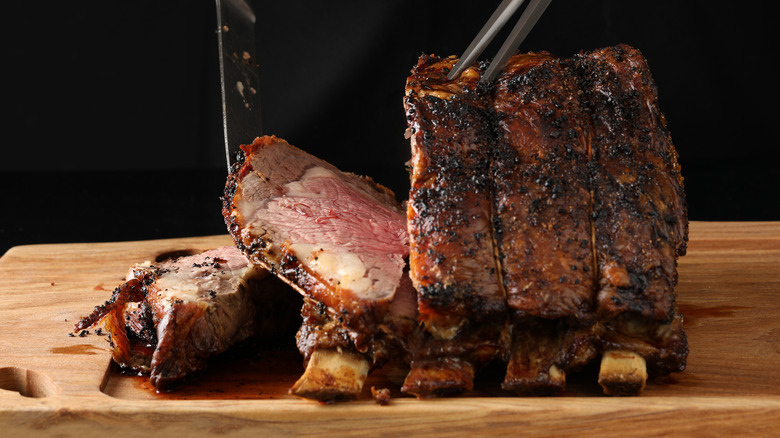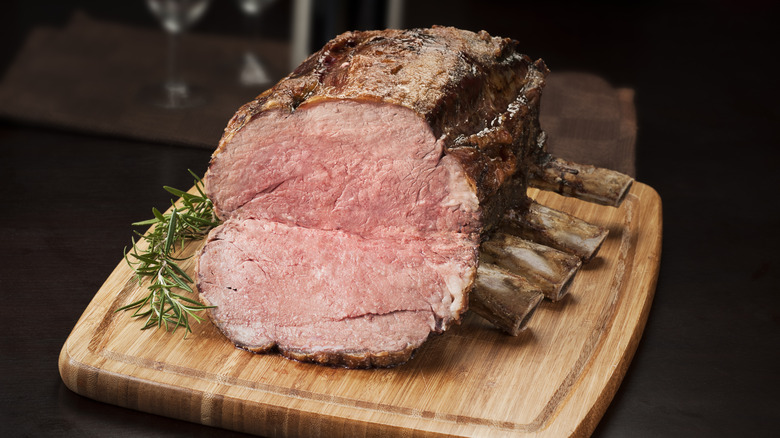Reverse Cook Your Prime Rib Roast To Serve It Up Immediately
Prime rib might just be the king of all beef cuts, and a piece of meat that warrants the best possible treatment. Fatty, juicy, and tender, prime rib's traditional preparations have stayed minimal so as to emphasize its inherent flavor. Normally it gets started in the oven at high heat to brown, and then goes through a long, slow cook that keeps the meat extra tender as the fat breaks down. Cooked to medium-rare this yields great results, but not quite perfect; in order to keep the prime rib from losing juice when sliced, it requires a long resting time before you can serve it. Besides the agony of the wait, that means your prime rib might be cooler than you like if you want it as juicy as possible. But there is a better way, and it's as simple as reversing the process.
The reverse sear is a method that's become popular for making great steaks, and a version of the technique is perfect for prime rib. Instead of starting on high heat in the oven, you do the slow cook portion first. Many recipes will recommend roasting at 200 degrees Fahrenheit until the internal temperature is between 115-120 degrees Fahrenheit (for medium rare). That can take anywhere from two and a half to five hours depending on the size of the roast you are using. You then remove the prime rib from the oven and let it sit for the juices to settle. Finish by cranking up the oven as high as it will go (500 degrees Fahrenheit), and return the prime rib for just a few minutes to brown the outside and form a perfect crust. Then it's ready to slice and serve hot from the oven.
Reverse searing your prime rib keeps it juicy and warm when you're ready to serve
The big advantage of this method is tied to the size of the prime rib roasts. Beef of all kinds benefits from being rested after cooking, because as meat heats up, its muscle fibers contract and squeeze out moisture. If you cut into it right out of the oven, a lot of the juice that keeps meat flavorful and tender will seep out. Resting it allows it to reabsorb a lot of the liquid expelled during cooking. With a cut as big as prime rib, this resting period can take a half hour or more, which isn't ideal if you want a nice warm slice. But the reverse sear fixes this and actually takes advantage of prime rib's size.
By moving the browning to the end of the cooking process, after the resting period, the prime rib still gets to relax enough to stay juicy. Hitting the exterior with a short, high heat sear warms it back up and gives you that flavorful crust, but the thickness of the roast prevents it from overcooking inside, or contracting again and expelling moisture. The result is a brown-on-the-outside, pink-on-the-inside prime rib that won't lose moisture when you cut into it, while still being served warm from the oven. It's the finish that a pricey cut like prime rib deserves, and it will give you a result worthy of the best chophouses.

